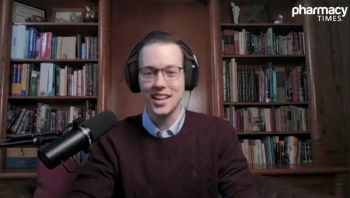
Stress Gene Enhances Treatment-Exacerbated Breast Cancer Metastasis
In some cases, chemotherapy can spur cancer cells to spread to other parts of the body.
It is no secret that chemotherapy is a double-edged sword when it comes to treating cancer. While the treatment may help thwart the disease in some patients, it can also facilitate the spread of the disease in others.
In a study published in the Proceedings of the National Academy of Sciences, investigators used a mouse model of breast cancer to identify the mechanisms behind metastasis.
The chemotherapy drug paclitaxel sets off various changes on a molecular level that allows
“That chemotherapy can paradoxically promote cancer progression is an emerging revelation in cancer research,” said senior author Tsonwin Hai. “However, a molecular-level understanding of this devastating effect is not clear.”
Changes in both the tumor and lung are dependent on the gene Atf3, which is switched on by stress. Using data from women with breast cancer, the investigators found higher levels of Atf3 expression in patients who underwent chemotherapy compared with patients who did not.
“This gene seems to do 2 things at once: essentially help distribute the ‘seeds’ (cancer cells) and fertilize the ‘soil’ (the lung),” Hai said.
To start off, the chemotherapy appears to send out signals that increase the number of molecular doors the cancer cells can escape from, according to the authors.
“I think it’s an active process—–a biological change in which the cancer cells are beckoned to escape into the blood––rather than a passive process in which the cancer cells get into the bloodstream because of leaky vessels,” Hai said.
Similar findings using imaging techniques to view the mouse’s tumors were seen in a recent study at the Albert Einstein College of Medicine.
In addition to aiding the escape of cancer cells, the investigators also found
“There are signals that help cancer cells enter the lungs and set up shop, that make the environment more immunologically tolerant to cancer cells,” Hai said.
The cancer cells used in the mouse models for the study were extremely aggressive, Hai noted, and it would be interesting to test whether paclitaxel could also enhance cancer cell escape at earlier stages in the disease.
“At this point, what our study and the recent literature on chemotherapy taught us is that it is prudent to keep our mind open, realizing that chemo can help treat cancer, but at the same time may increase the possibility of the spread of that cancer,” Hai said.
Overall, the authors learned the stress gene Atf3 is turned off by paclitaxel to activate its pro-cancer effect.
“It’s possible there could be a treatment given in conjunction with the chemo that would inhibit this problem by dampening the effect of the stress gene Aft3,” Hai concluded.
Newsletter
Stay informed on drug updates, treatment guidelines, and pharmacy practice trends—subscribe to Pharmacy Times for weekly clinical insights.


















































































































































































































